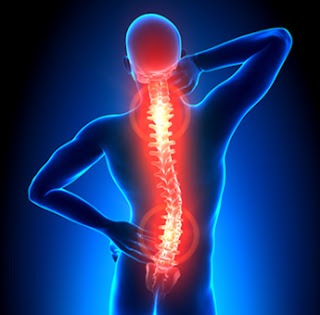Lower back pain is a common cause and reason for visits to the doctor. According to the National Institute of Neurological Disorders and Stroke (NINDS), low back pain is the most common cause of job-related disability. At least 80 percent of the world will experience low back pain in their lifetimes.
Most low back pain is the result of an injury, such as muscle sprains or strains due to sudden irregular movements or poor body mechanics while lifting heavy objects. Low back pain can also be the result of certain diseases, such as cancer of the spinal cord, a ruptured or herniated disc, sciatica, arthritis, kidney infections, or infections of the spine. Acute back pain can last anywhere from a few days to a few weeks, while chronic back pain is pain that lasts longer than three months.
Low back pain is more likely to occur in individuals between the ages of 30 and 50. This is partly due to the changes that occur in the body with ageing. As you grow older, the fluid content between the vertebrae in the spine became reduces. This means that discs in the spine experience irritation more easily. You also lose some muscle tone, which makes the back prone to injury. This is why strengthening your back muscles and using good body mechanics are helpful in preventing low back pain.
What Are the Causes of Low Back Pain?
Strains
The muscles and ligaments in the back can stretch or tear due to excess activities. Symptoms include pain and stiffness in the lower back, as well as muscle spasms in the body. Rest and physical therapy are remedies for these symptoms.
Disc Injury
The discs in the back are prone to injuries, and this risk increases with age. The outside of the disc can tear or herniate. A herniated disc (also known as a slipped or ruptured disc) occurs when the cartilage surrounding the disc pushes against the spinal cord or nerve roots. The cushion that sits between the spinal vertebrae extends outside its normal position. This can result in compression of the nerve root as it exits from the spinal cord and through the vertebral bones. Disc injury usually occurs suddenly after lifting something or twisting the back. Unlike a back strain, pain from a disc injury usually lasts for more than 72 hours.
Sciatica
Sciatica can occur with a herniated disc if the disc presses on the sciatic nerve. The sciatic nerve connects the spine to the legs. As a result, sciatica can cause pain in the legs and feet. This pain usually feels like burning or pins and needles
Spinal Stenosis
Spinal stenosis is when the spinal column narrows, putting pressure on the spinal cord and spinal nerves. Spinal stenosis is most commonly due to degeneration of the discs between the vertebrae.
The result is compression of the nerve roots or spinal cord by bony spurs or soft tissues, such as discs. Pressure on the spinal nerves causes symptoms such as numbness, cramping, and weakness. You might feel these symptoms anywhere in the body. Many people with spinal stenosis notice their symptoms worsen when standing or walking.
The result is compression of the nerve roots or spinal cord by bony spurs or soft tissues, such as discs. Pressure on the spinal nerves causes symptoms such as numbness, cramping, and weakness. You might feel these symptoms anywhere in the body. Many people with spinal stenosis notice their symptoms worsen when standing or walking.
Preventing Low Back Pain Using Decompression Therapy by Gurupatham Spine Care Centre
We at Gurupatham Spine Care offers Advanced Level Non Surgical Spinal Decompression Treatment combined with spine manipulation is a revolutionary non-surgical treatment for all spine related problems.
GSCC is safe and economical way of curing , and now it offers hope for the thousands of people who suffer from back and neck pain every day.
NON SURGICAL SOLUTIONS
Established in 2007 GSCC Centre focuses mainly on non-surgical solutions for spinal problems like disc prolapse, back pain, neck pain etc
ADVANCED TECHNOLOGY
We had taken the help of the advancements of technology, using sophisticated effective machinery and technology that decompresses the spinal cord and spinal nerves.Non Surgical Drugless Spine care treatments in Tamil Nadu, India Patient Testimonials















